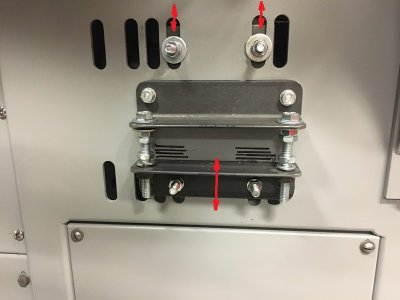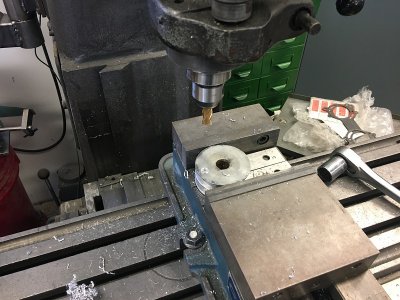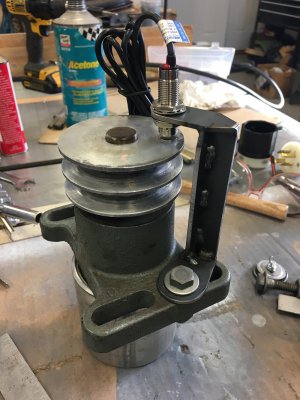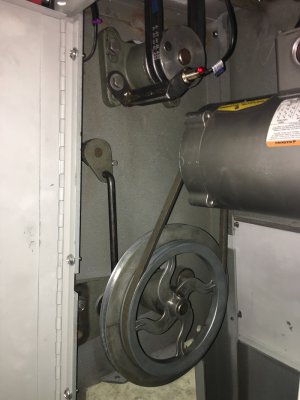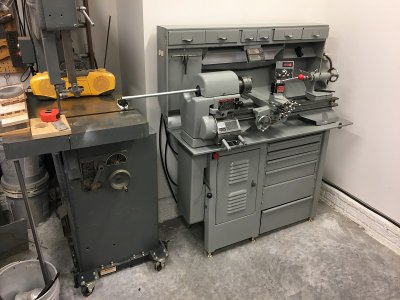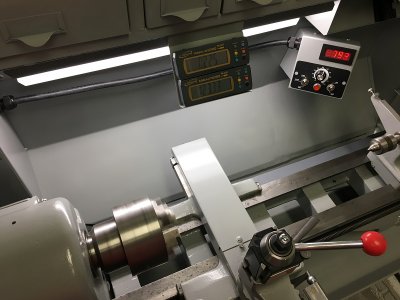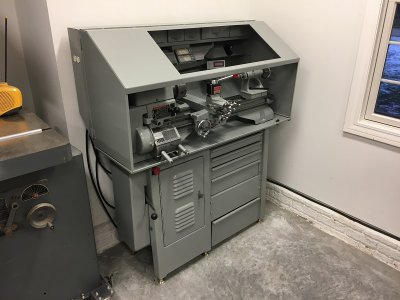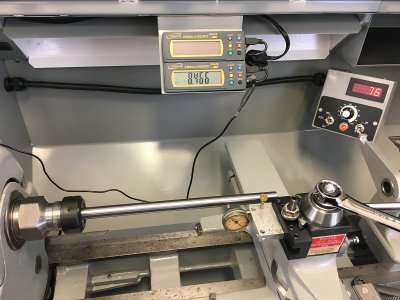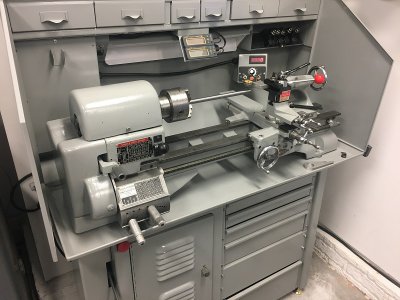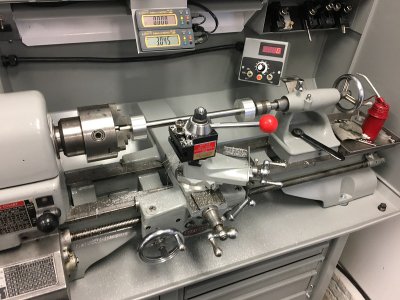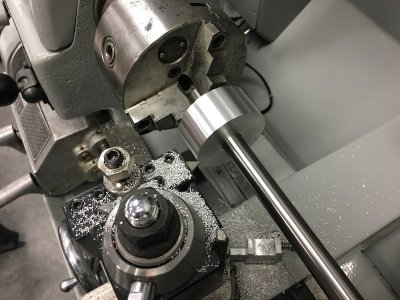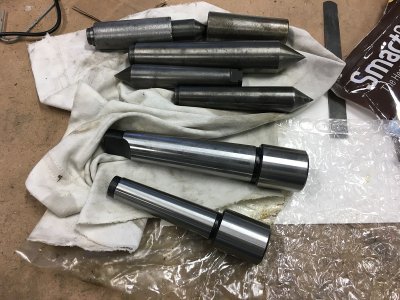Back at it. I reconsidered my previous plan to mount the backsplash on the wall and opted to mount it on the lathe cabinet. I figured forever is a long-long time and I may want to move the location of the lathe at some point and by the time I fabbed the features to mount and position it on the wall, it wasn’t much more effort to make everything an integral unit. So I bent up some 18 gage ribbing and mounting flanges and stitched it to the backside of the backsplash to stiffen it up and provide some mounting points.
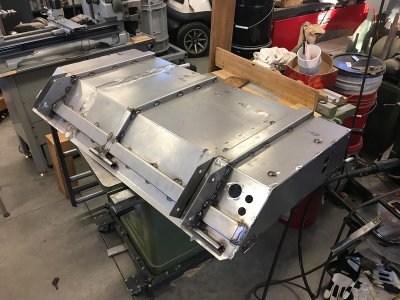
For the mounting brackets I had some short 2” square tube remnants and figured with ¼” mounting plates and some 1/8” gussets would get the backsplash mounting job done. They mount on pedestal and end cap of the cabinet which are 3/16” formed steel, so they are a good rigid attaching location. I painted everything the same as the lathe and cabinet. …..onto final assembly.
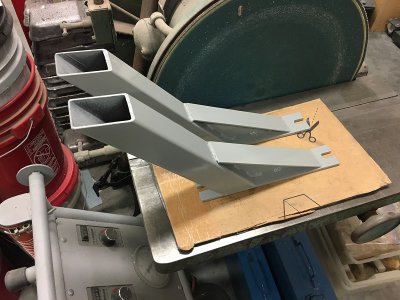
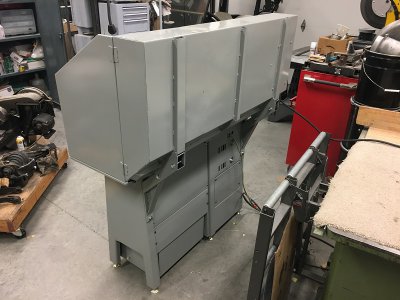
I mounted the electrical components and wired everything up. Besides the VFD, it’s just a few switches and connectors, and small power supply for the tach and DROs……The cables and harnesses to connect everything took some effort, especially the remote VFS control box, but it’s clean, functions and presents well.
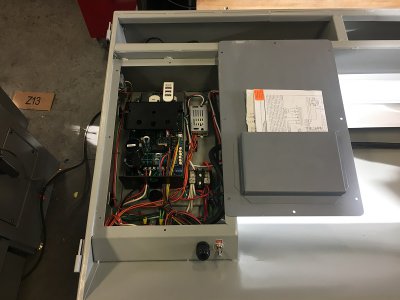
I installed a panic button. The VFD had an emergency stop capability with rapid motor deceleration so I figured what the heck, why not…..?
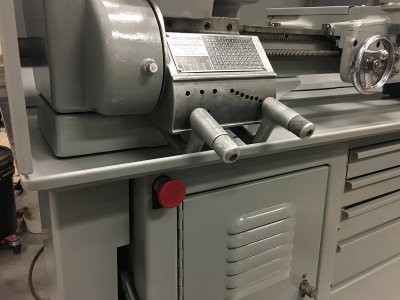
The back underside of the control box portion of the backsplash has receptacles to receive plugs from the motor, tachometer sensor, and emergency stop in the lower cabinet.
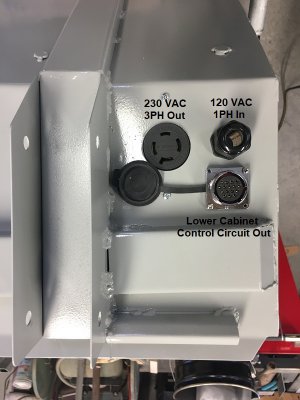
Since I’m standing at a distance you can see the light itself in the picture but when you are standing at the lathe it shines on the work area and line of sight to your eyes is shielded by the deflector.
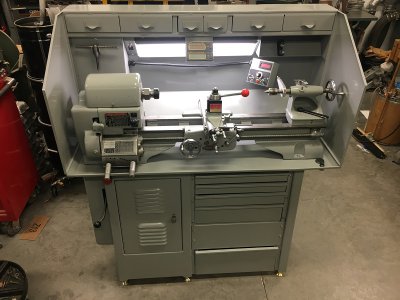
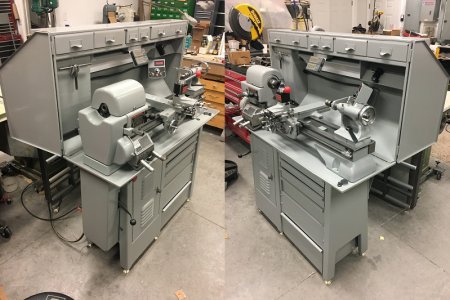
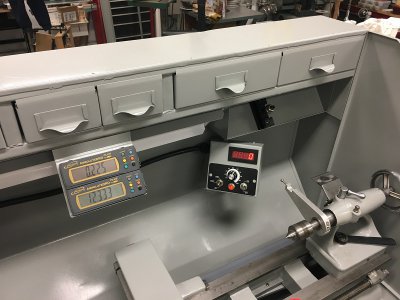
I bench tested the 3-phase motor but need to mount it in the cabinet. Should get to that tomorrow. Getting’ close to wrapping this one up.
Best,
Kelly

For the mounting brackets I had some short 2” square tube remnants and figured with ¼” mounting plates and some 1/8” gussets would get the backsplash mounting job done. They mount on pedestal and end cap of the cabinet which are 3/16” formed steel, so they are a good rigid attaching location. I painted everything the same as the lathe and cabinet. …..onto final assembly.


I mounted the electrical components and wired everything up. Besides the VFD, it’s just a few switches and connectors, and small power supply for the tach and DROs……The cables and harnesses to connect everything took some effort, especially the remote VFS control box, but it’s clean, functions and presents well.

I installed a panic button. The VFD had an emergency stop capability with rapid motor deceleration so I figured what the heck, why not…..?

The back underside of the control box portion of the backsplash has receptacles to receive plugs from the motor, tachometer sensor, and emergency stop in the lower cabinet.

Since I’m standing at a distance you can see the light itself in the picture but when you are standing at the lathe it shines on the work area and line of sight to your eyes is shielded by the deflector.



I bench tested the 3-phase motor but need to mount it in the cabinet. Should get to that tomorrow. Getting’ close to wrapping this one up.
Best,
Kelly


